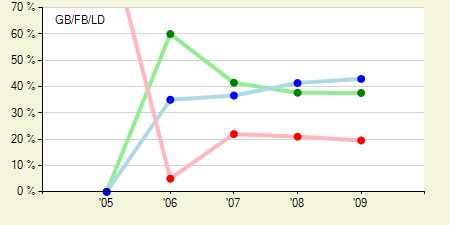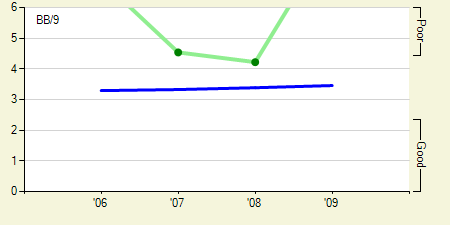A Dose of Reality for Prospect Watchers
All of the minor league regular seasons are officially over, and it will soon be one of my favorite seasons of the year — prospect evaluation and ranking time. I personally love reading the various scouting reports and rankings; I devour it as much of it as I can stand. Now excuse me while I become a wet blanket.
I think as we look at minor league stats and read scouting reports, if we are not careful we can get rose-colored glasses when it comes to our outlook of the future of these players. The truth is most of these players we find ourselves pulling for simply won’t ever make it.
Victor Wang has done some tremendous research about prospects and their value. In determining their value he had to find the rate of which players bust in each category he divided them into. This is a healthy dose of realism to keep in mind when we’re looking at the any one club’s farm system.
* 10% of top 10 hitting prospects bust.
* 31% of top 10 pitching prospects bust.
* 21% of top 11-25 hitting prospects bust.
* 32% of top 11-25 pitching prospects bust.
* 35% of top 26-50 hitting prospects bust.
* 33% of top 26-50 pitching prospects bust.
* 45% of top 51-75 hitting prospects bust.
* 39% of top 51-75 pitching prospects bust.
* 43% of top 76-100 hitting prospects bust.
* 43% of top 76-100 pitching prospects bust.
* 59% of ‘B grade’ hitting prospects bust.
* 52% of ‘B grade’ pitching prospects bust.
* 83% of ‘C grade’ hitting prospects bust.
* Around 75% of all ‘C grade’ pitching prospects bust.
Top 100 prospects are Baseball America’s. B and C grades are as ranked by prospect wonk John Sickels.
Top ten hitting prospects are just about can’t miss. Not all of them reach the level of stardom, but they seldom fail to bring value to a team. Going on down the line, the rates of attrition obviously get higher and higher. I find the failure rates among top pitchers to be striking, and it’s interesting to see how things even out between hitters and pitchers as you go down the grades.
This isn’t anything really new, but it is something to keep in mind when reading these rankings. Reading some reports you would be almost led to believe that even the majority of C grade hitting or pitching prospects will end up being at least a major league utility players or a middle relievers, but that’s simply not the case.
Feel free to soak up all the prospect hype you can find, but always take it with a grain of salt.





